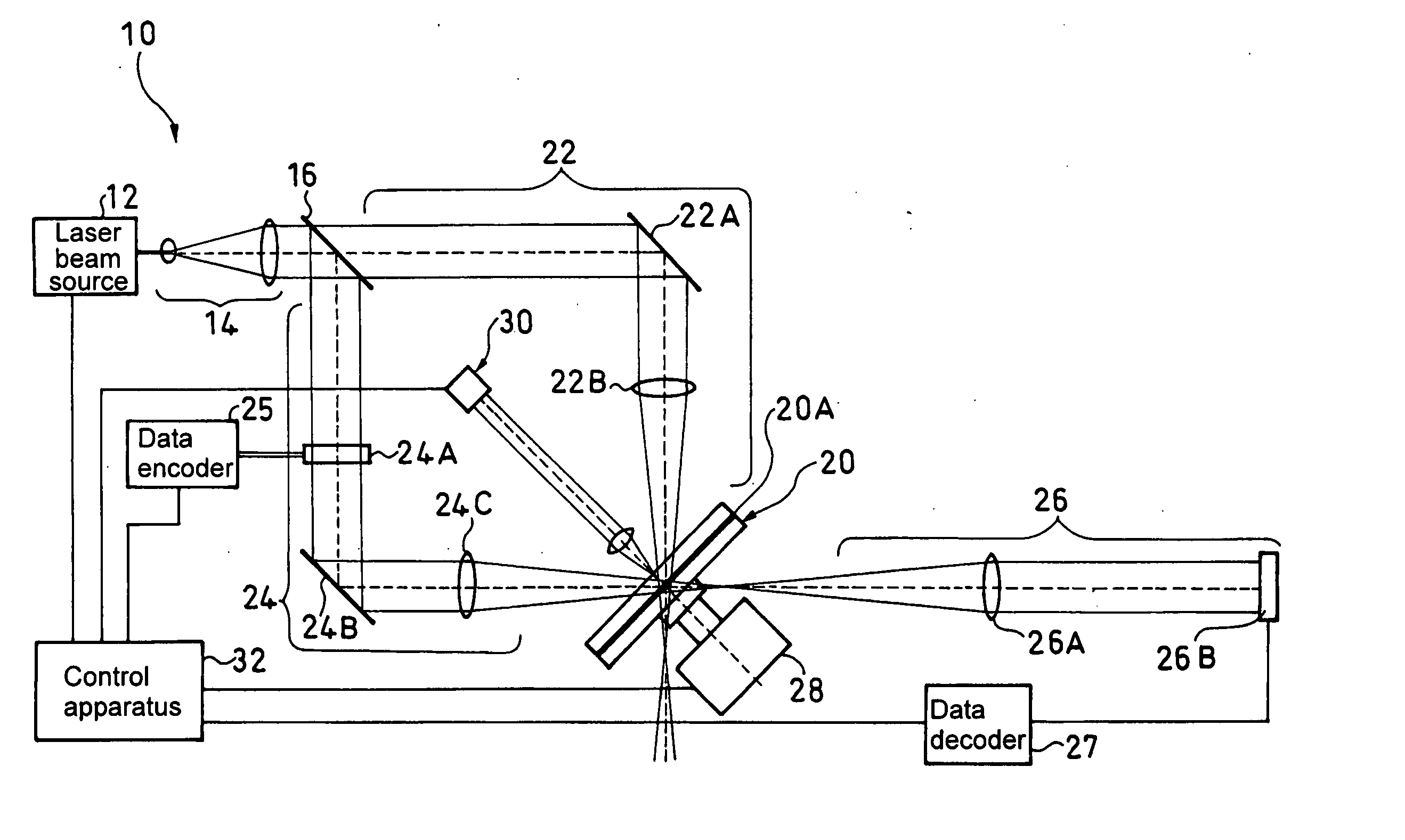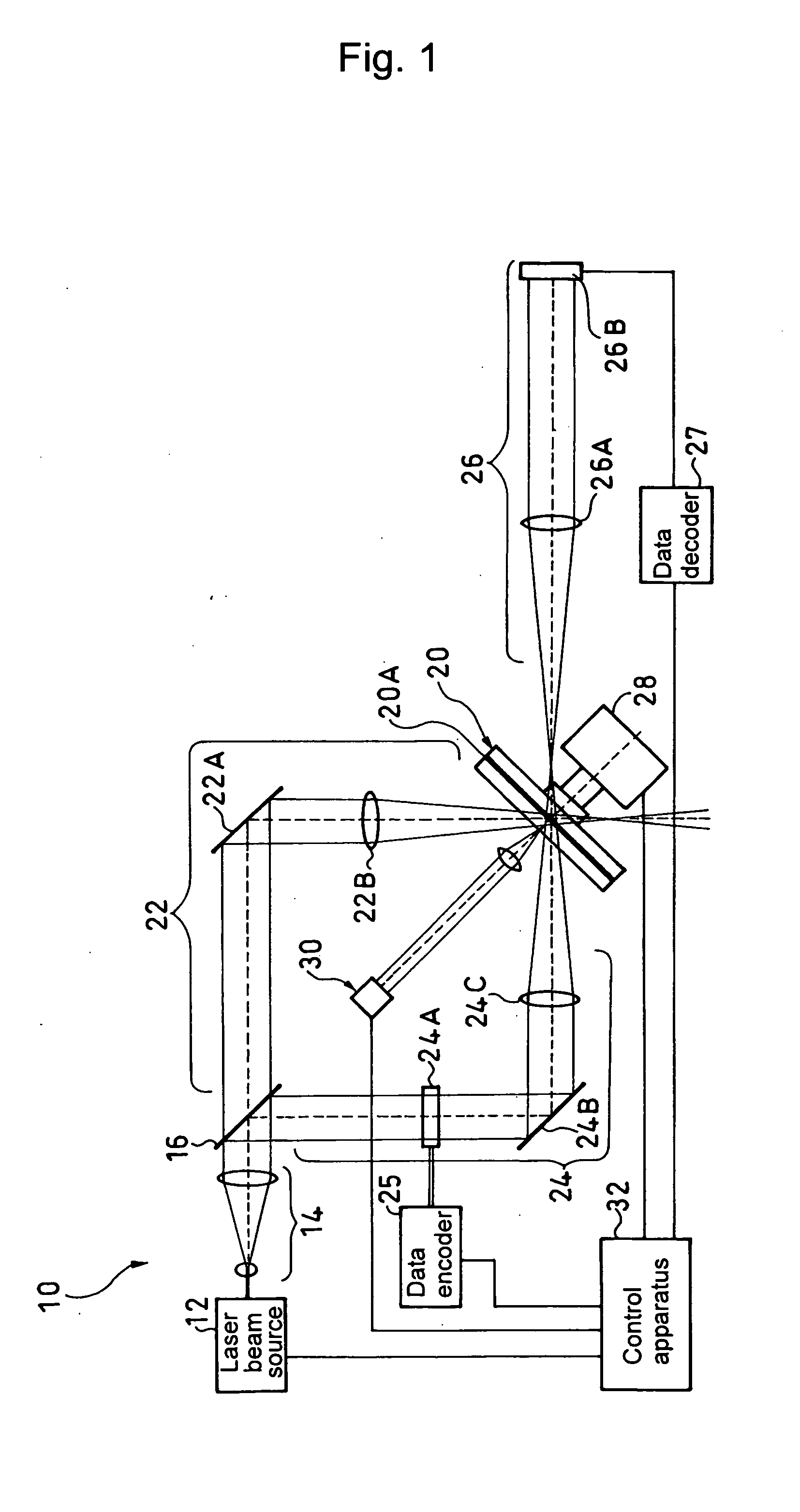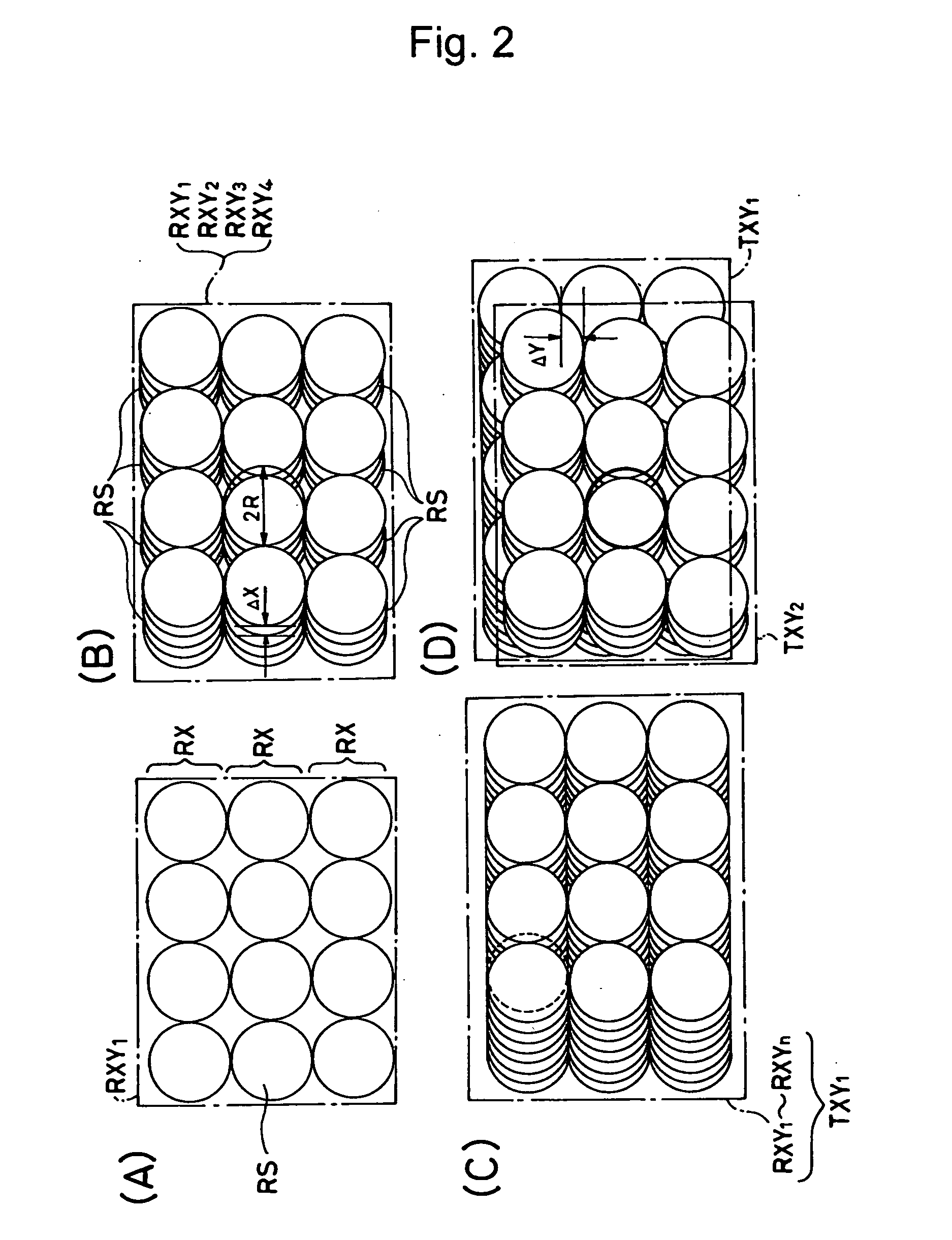Holographic multiplex recording method
- Summary
- Abstract
- Description
- Claims
- Application Information
AI Technical Summary
Benefits of technology
Problems solved by technology
Method used
Image
Examples
first embodiment
[First Embodiment]
[0033]FIG. 1 shows an apparatus for embodying the holographic multiplex recording method of the present invention.
[0034] A holographic multiplex recording apparatus 10 is configured to include: a laser beam source 12; a beam expander 14 for expanding the beam diameter of the laser beam emitted from this laser beam source 12; a beam splitter 16 for splitting the laser beam having the beam diameter expanded by this beam expander 14 into a reference beam and an object beam; a reference optical system 22 for guiding the reference beam, which is the transmission beam of the abovementioned beam splitter 16, to a holographic recording medium 20; an object optical system 24 for guiding the object beam, which is the reflection beam of the abovementioned beam splitter 16, to the abovementioned holographic recording medium 20; an imaging optical system 26 which is arranged on a line extending the optical axis of the object beam having been projected onto the abovementioned h...
second embodiment
[Second Embodiment]
[0061] Next, a second embodiment will be described with reference to FIG. 3.
[0062] The second embodiment is configured to include: a Y-axis direction first multiplex recording step of forming a Y-axis direction first multiplex recording spot matrix TYX1 shown in FIG. 3(B) by arranging first-stage recording spot rows RX1 comprising recording spots RS arranged with a constant pitch in the X-axis direction and adjacent to each other without overlapping as shown in FIG. 3(A), in the Y-axis direction with a slight phase shift (ΔY) relative to one another; a Y-axis direction second multiplex recording step of forming a Y-axis direction second multiplex recording spot matrix TYX2 by arranging recording spot rows RX2 comprising the recording spots RS arranged with a constant pitch in the X-axis direction and adjacent to each other without overlapping with reference to a position slightly phase-shifted (ΔX) in the X-axis direction with respect to the abovementioned first-...
third embodiment
[Third Embodiment]
[0066] Next, a method of a third embodiment of the present invention will be described with reference to FIG. 6.
[0067] This holographic multiplex recording method forms the recording spots by repeating a first-stage X-axis direction multiplex recording step to a last-stage X-axis direction multiplex recording step.
[0068] The abovementioned first-stage X-axis direction multiplex recording step comprises: an X-axis direction first multiplex recording step of forming an X-axis direction first multiplex recording spot row XR1 by arranging the recording spots RS in the X-axis direction with a slight phase shift relative to one another as shown in FIG. 6(A); an X-axis direction second multiplex recording step of forming an X-axis direction second multiplex recording spot row XR2 by arranging the recording spots RS with a slight phase shift (ΔX) relative to one another in positions adjacent and parallel to the abovementioned X-axis direction first multiplex recording sp...
PUM
 Login to View More
Login to View More Abstract
Description
Claims
Application Information
 Login to View More
Login to View More - R&D
- Intellectual Property
- Life Sciences
- Materials
- Tech Scout
- Unparalleled Data Quality
- Higher Quality Content
- 60% Fewer Hallucinations
Browse by: Latest US Patents, China's latest patents, Technical Efficacy Thesaurus, Application Domain, Technology Topic, Popular Technical Reports.
© 2025 PatSnap. All rights reserved.Legal|Privacy policy|Modern Slavery Act Transparency Statement|Sitemap|About US| Contact US: help@patsnap.com



